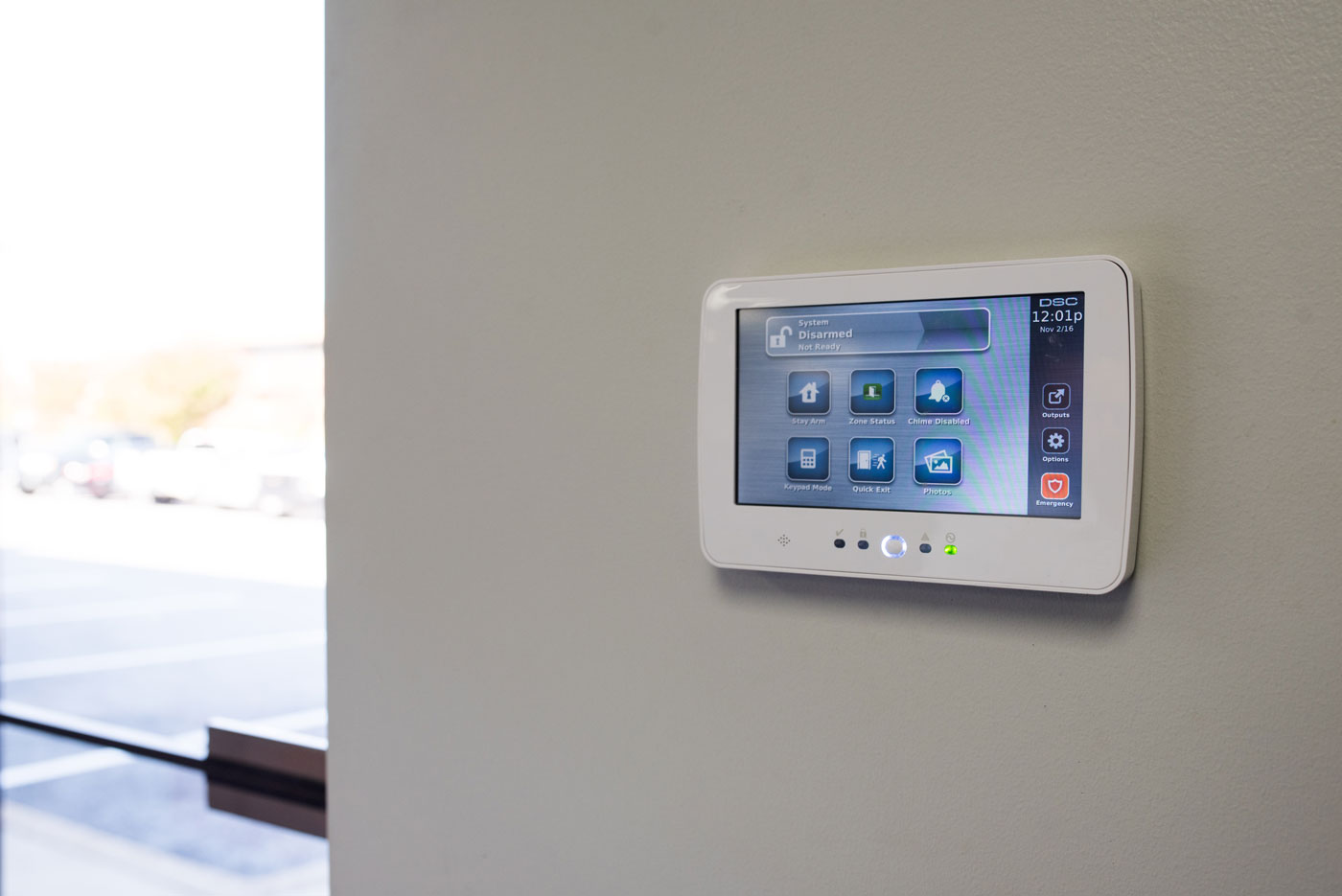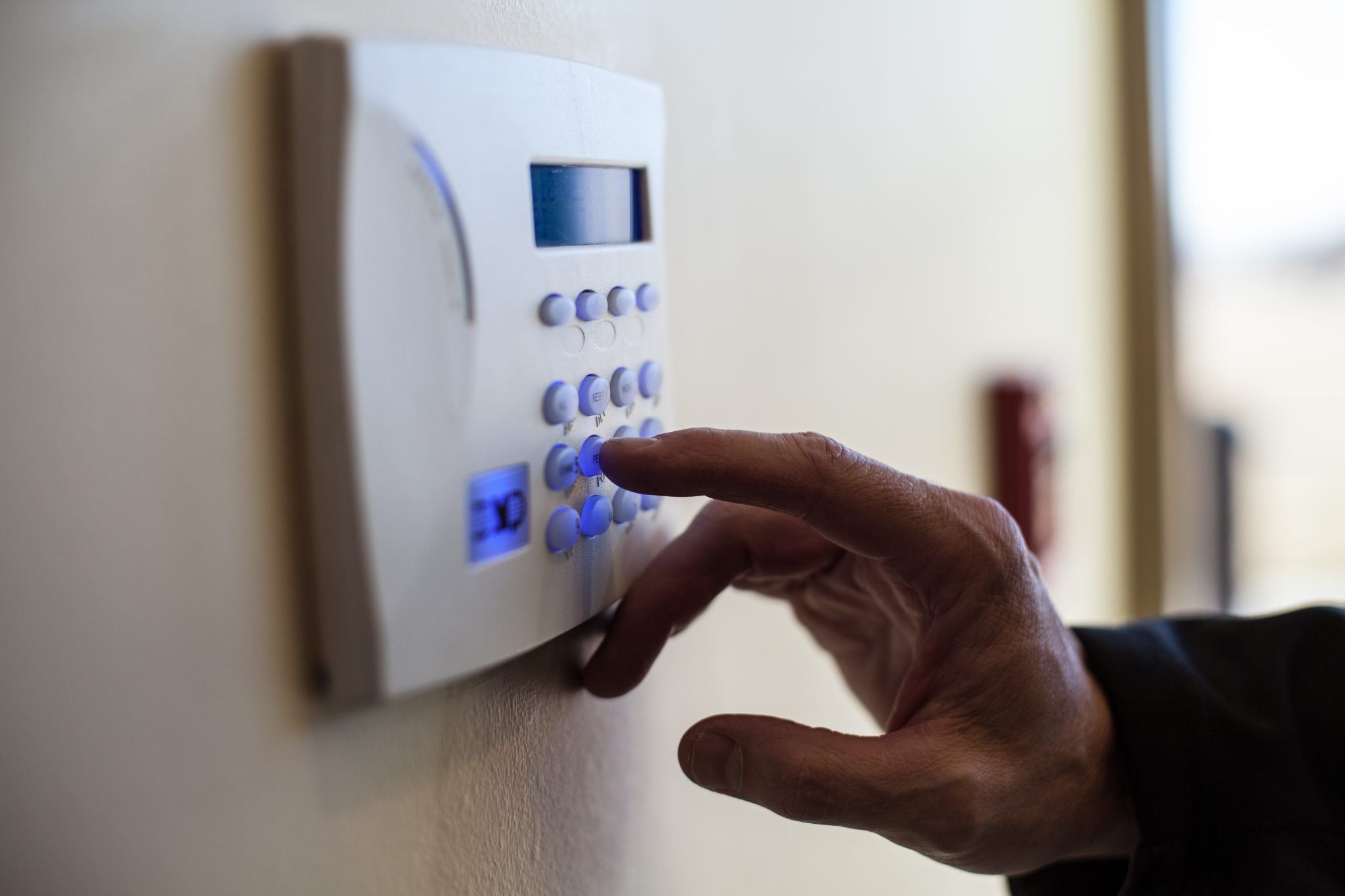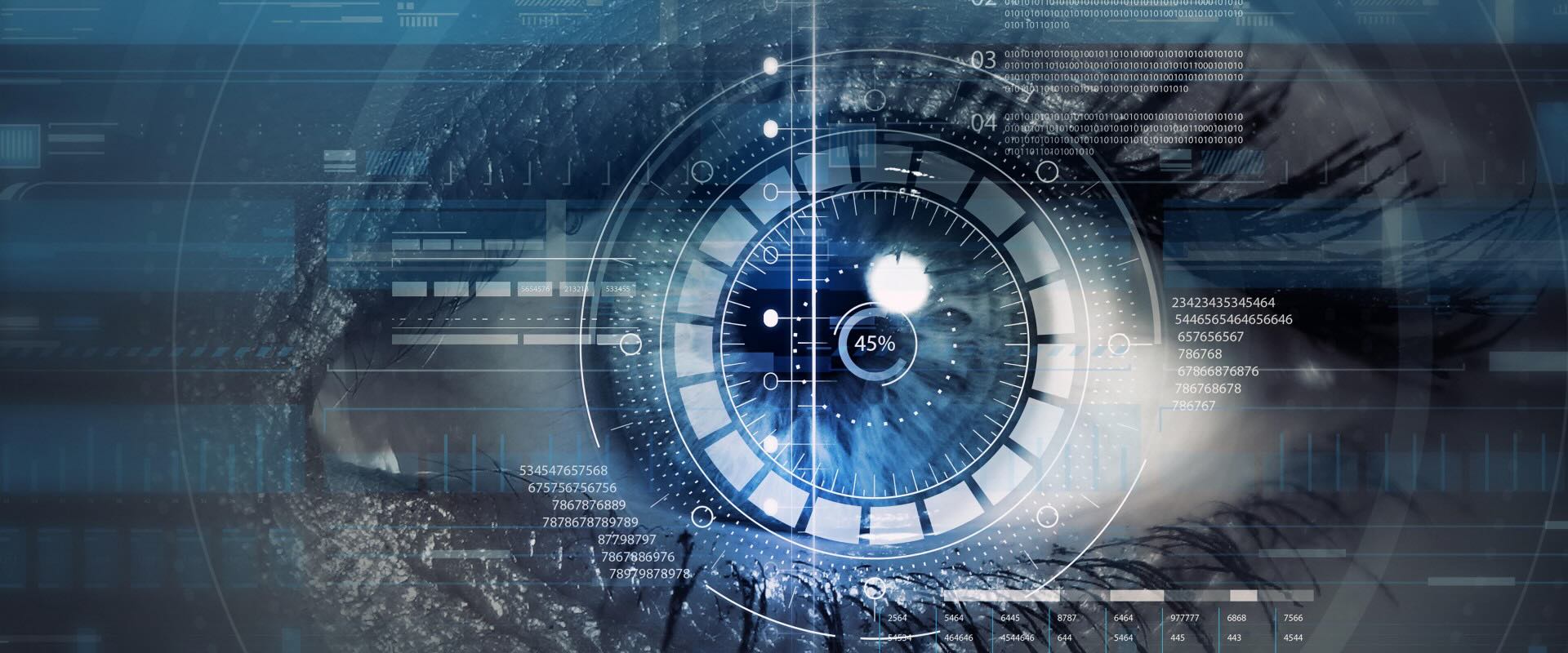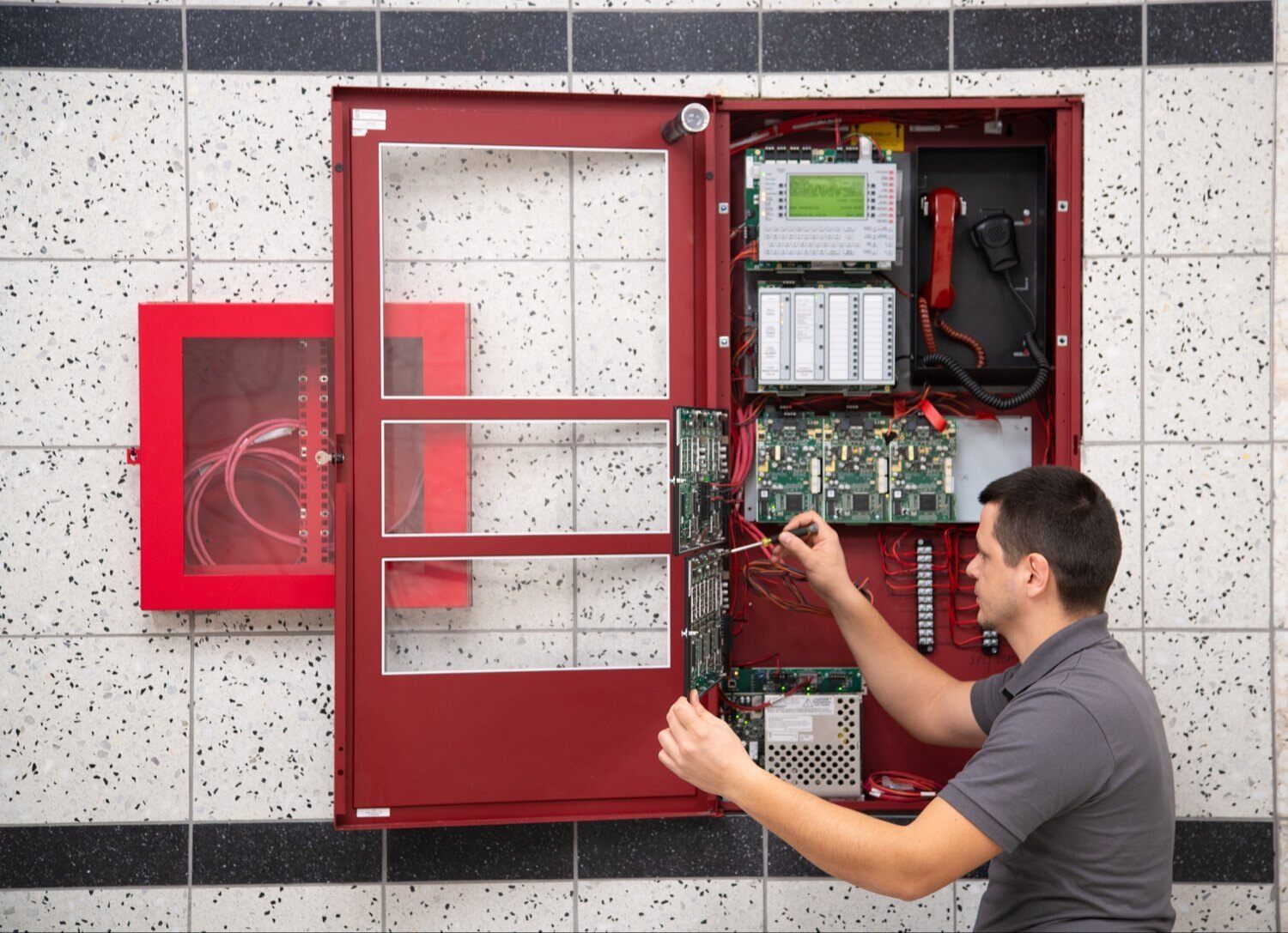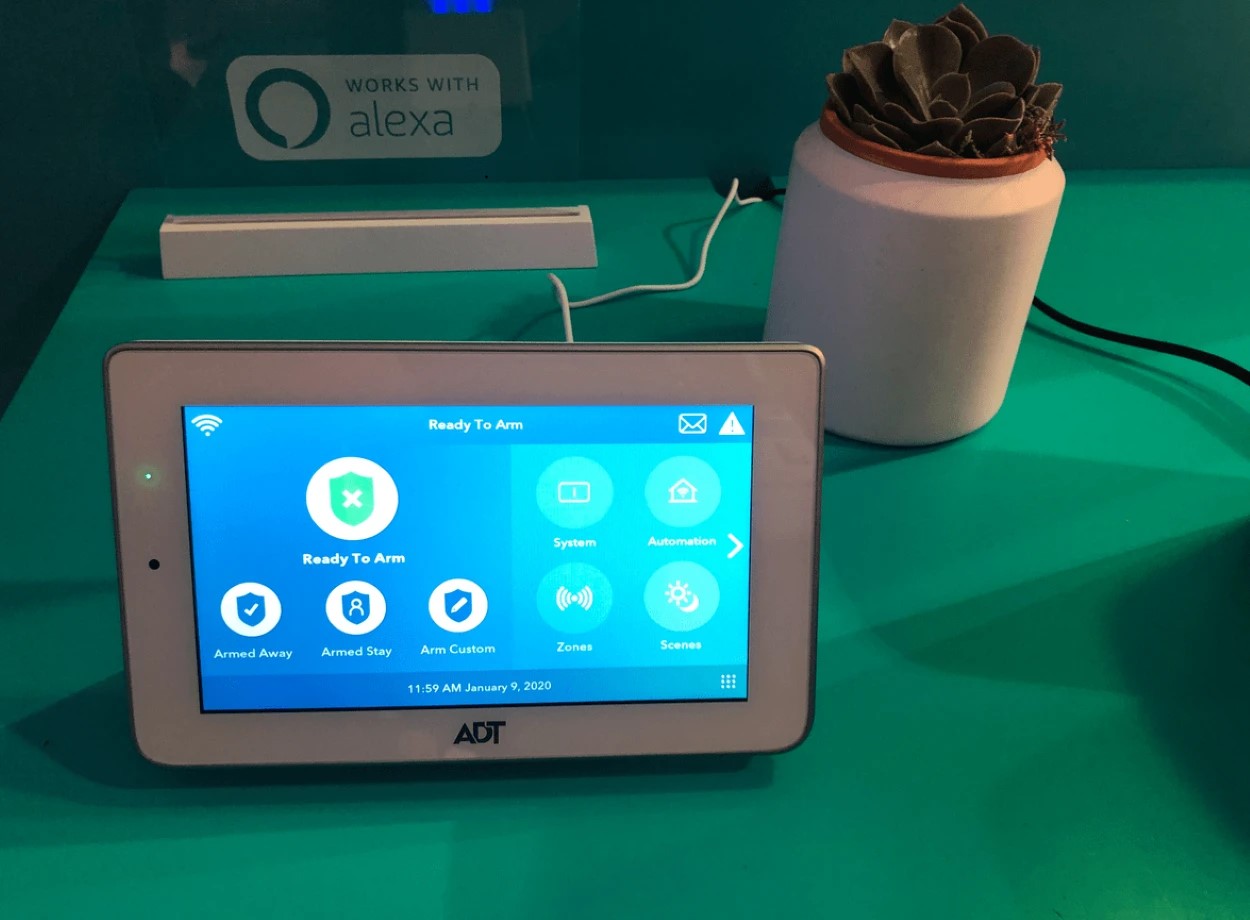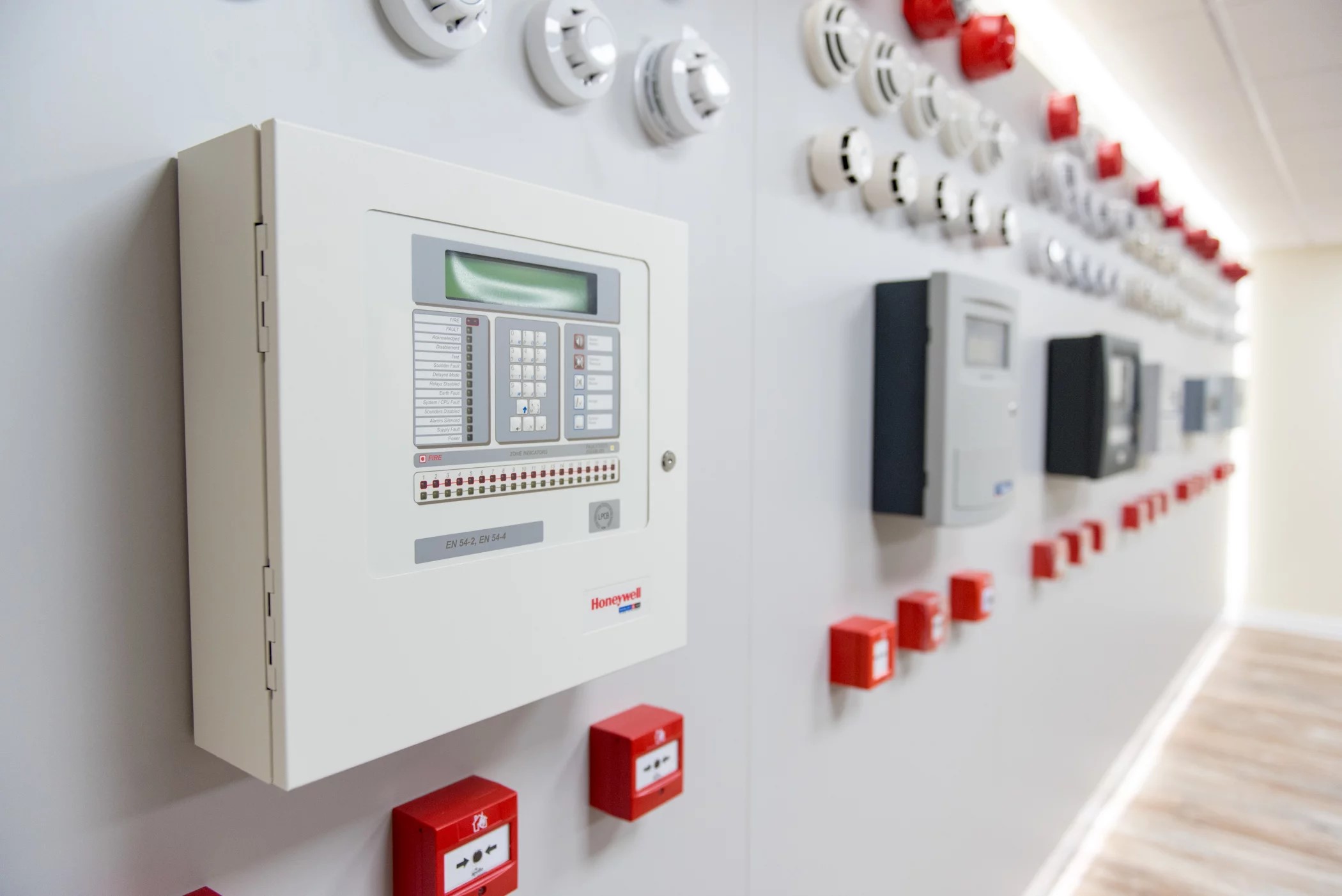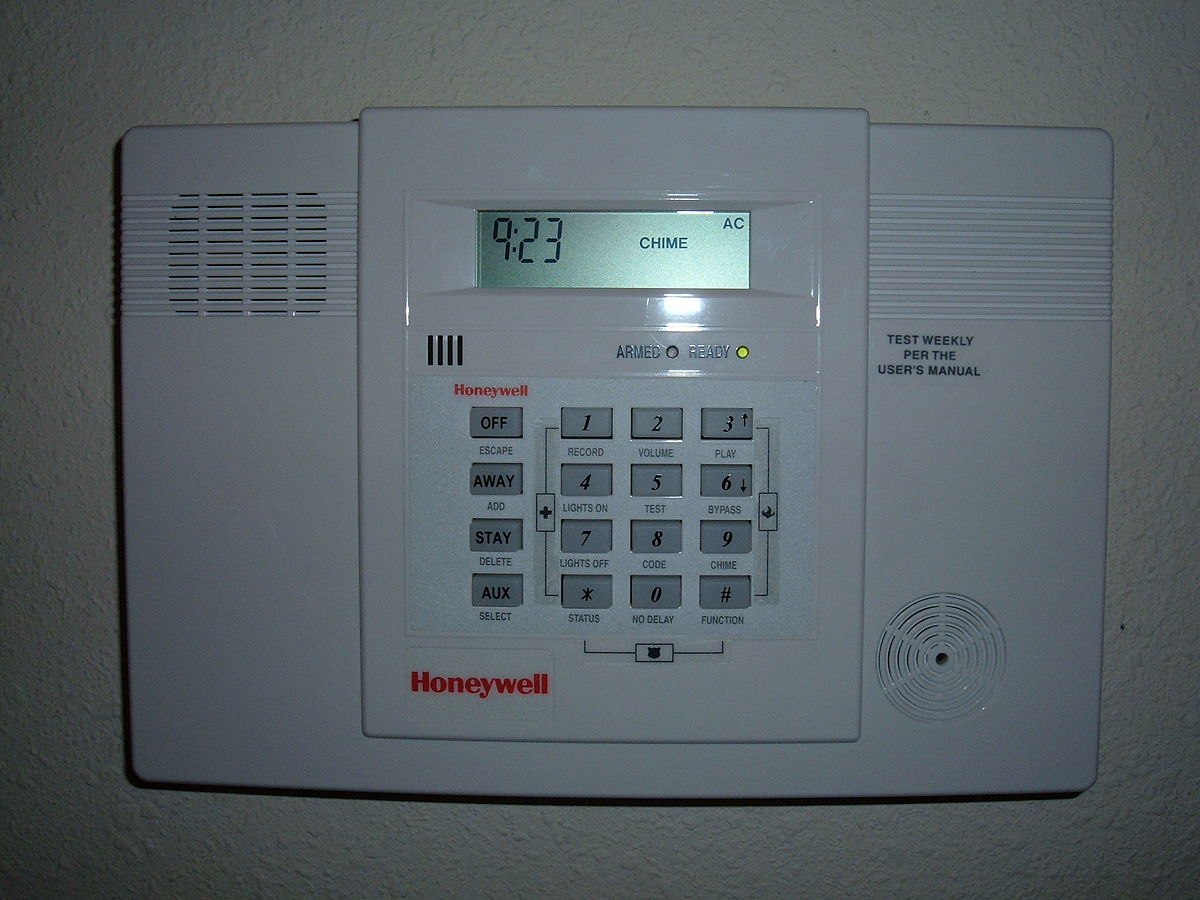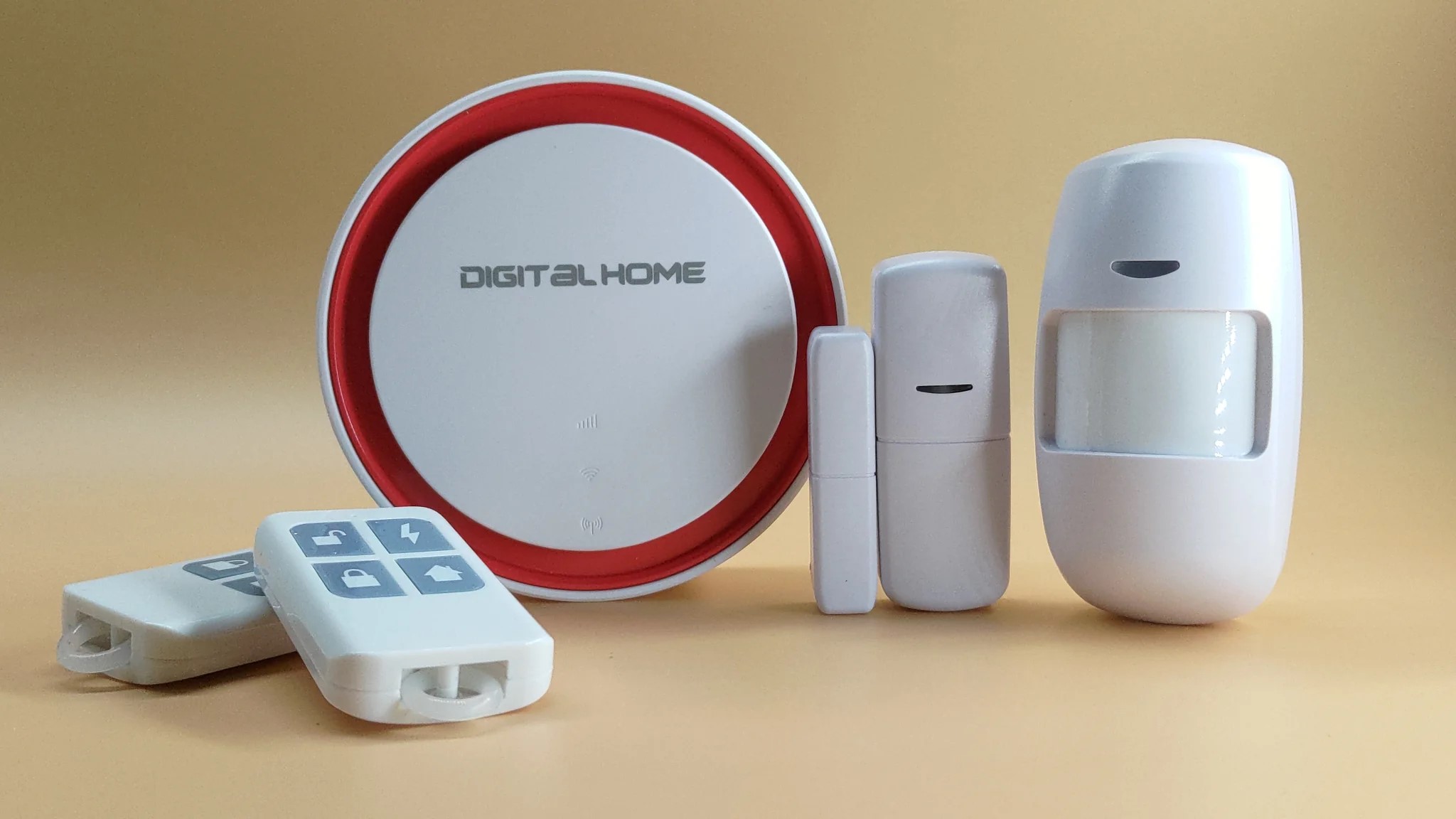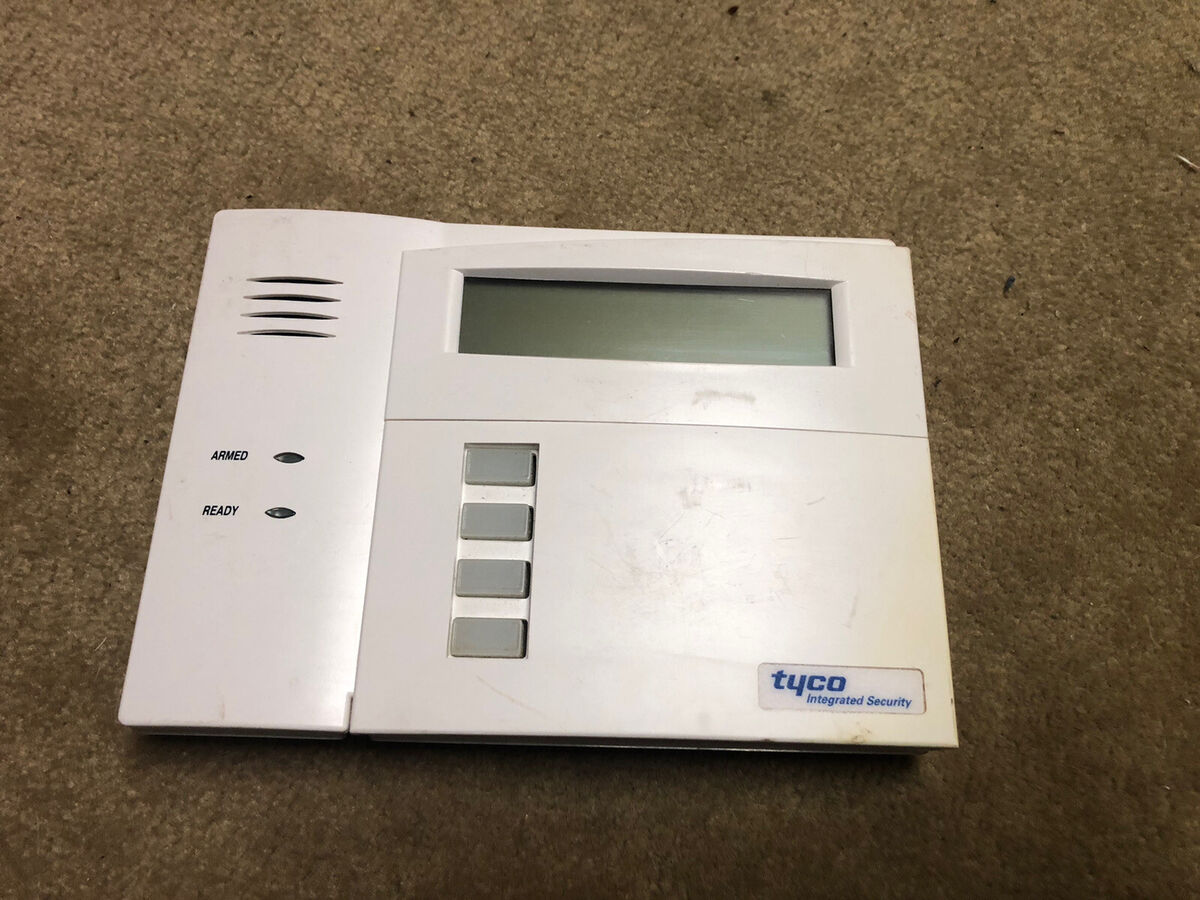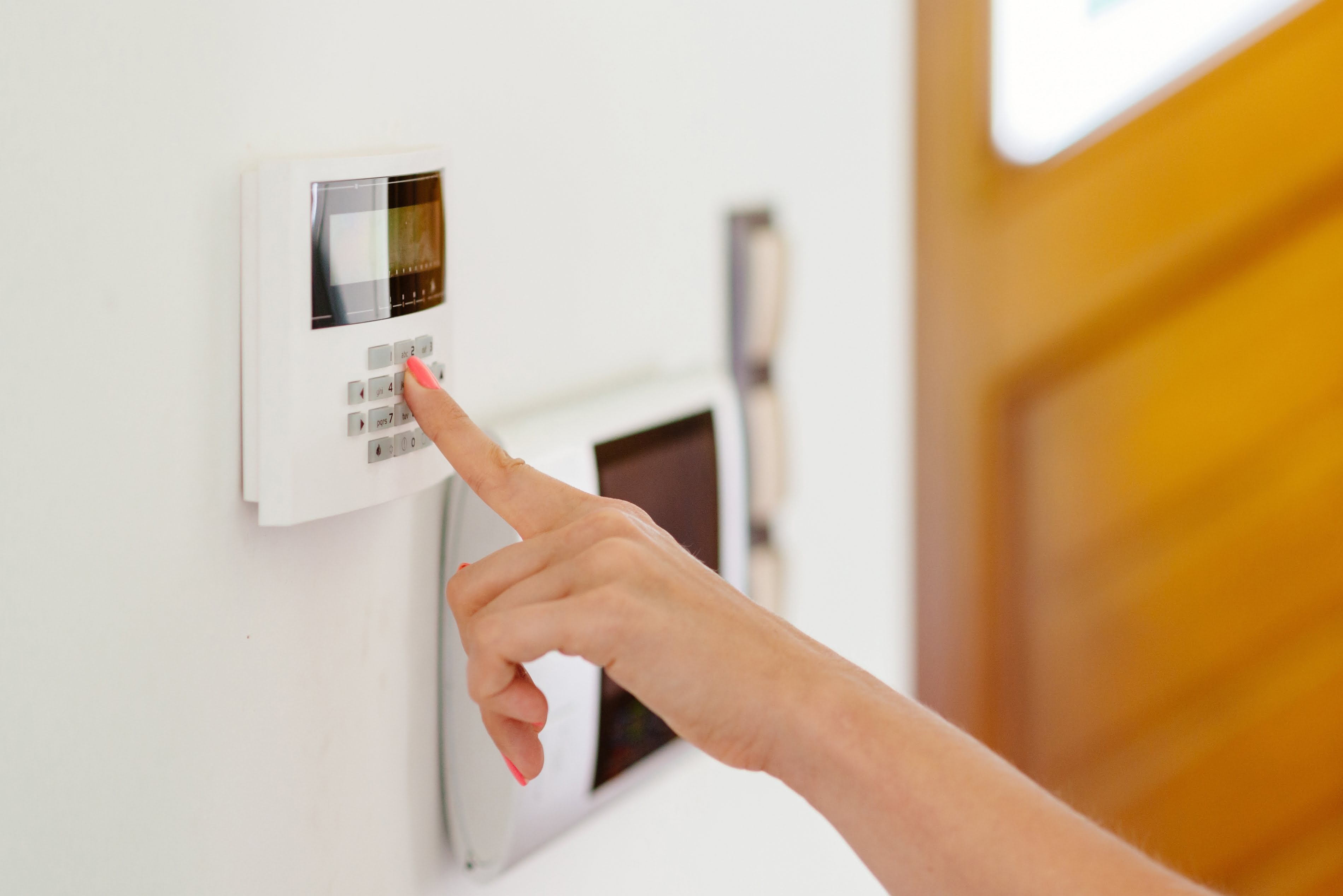Home>Home Security and Surveillance>Home Alarm Systems Deactivate When IPhone Is Detected
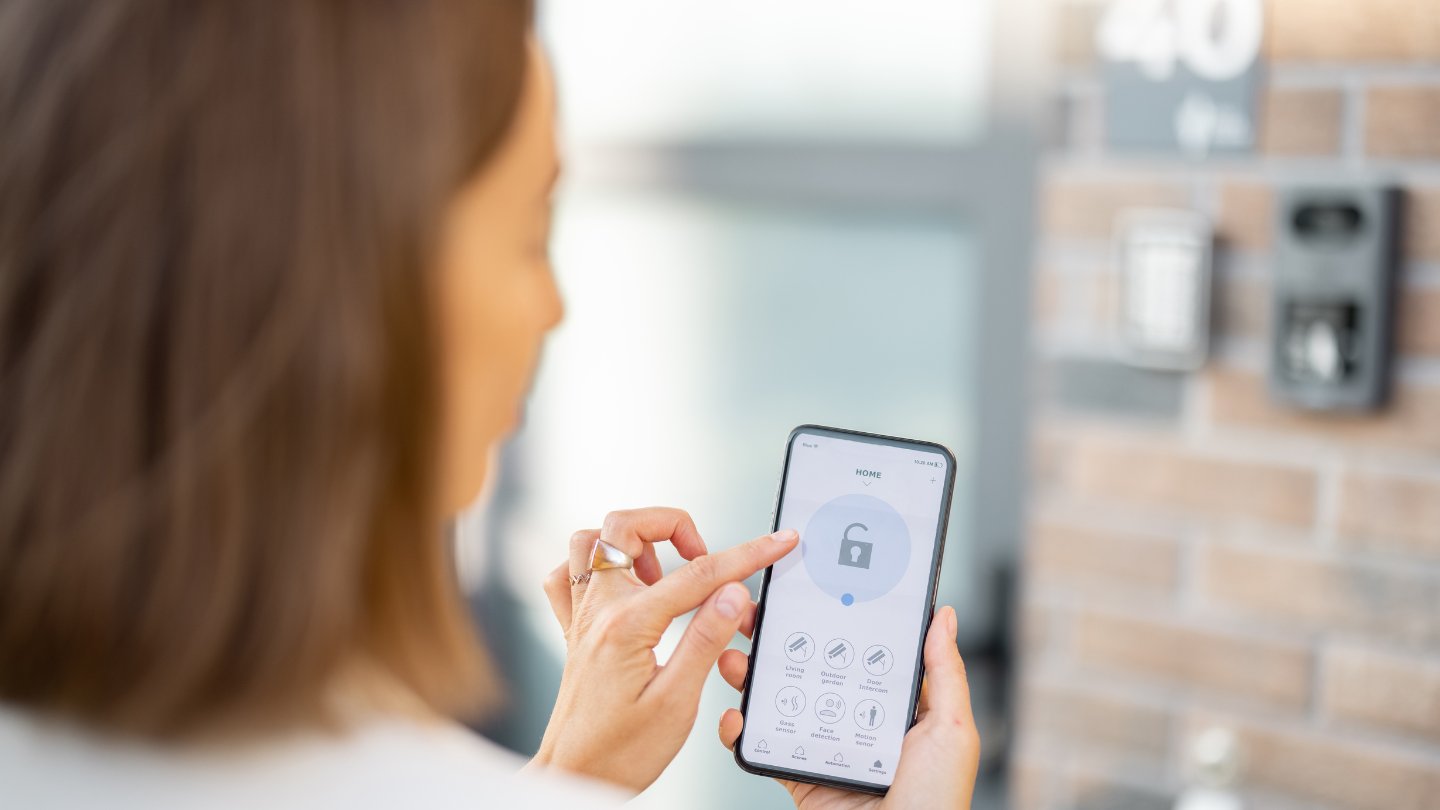

Home Security and Surveillance
Home Alarm Systems Deactivate When IPhone Is Detected
Modified: March 6, 2024
Keep your home secure with our advanced alarm systems that automatically deactivate when your iPhone is detected. Discover the ultimate home security and surveillance solution.
(Many of the links in this article redirect to a specific reviewed product. Your purchase of these products through affiliate links helps to generate commission for Storables.com, at no extra cost. Learn more)
Introduction
As technology continues to evolve, it’s no surprise that home alarm systems have become smarter and more sophisticated. Gone are the days of traditional alarm systems that relied solely on keypads, motion sensors, and telephone lines. Now, homeowners have the ability to integrate their home alarm systems with their smartphones, specifically iPhones, adding a whole new level of convenience and security.
With the integration of iPhone technology, home alarm systems can now be deactivated simply by the presence of the owner’s iPhone. This innovative feature offers homeowners a seamless and user-friendly way to control their alarm systems, providing peace of mind and added convenience.
In this article, we will explore how home alarm systems work, the integration of iPhone technology with these systems, the benefits of deactivating home alarm systems with iPhone detection, as well as some concerns and considerations. Finally, we will delve into the future developments and possibilities in this exciting field.
Key Takeaways:
- Home alarm systems can now be controlled using iPhones, offering convenience and enhanced security. This means homeowners can easily manage their home security from anywhere using their smartphones.
- Integrating iPhone technology with home alarm systems brings benefits like reduced false alarms, remote control, and potential smart home integration. It’s a convenient and secure way to manage home security.
Read more: When Are Fire Alarm Systems Required
How Home Alarm Systems Work
Before understanding how iPhone technology can be integrated with home alarm systems, it’s important to have a basic understanding of how these systems work. Home alarm systems are designed to detect and deter unauthorized entry or any other suspicious activity in and around a property.
Typically, a home alarm system consists of several components working together to provide comprehensive security:
- Sensors: These are the eyes and ears of the system. Sensors can be placed on doors, windows, and other access points to detect any movement or breach.
- Control Panel: The control panel serves as the brain of the system. It receives information from the sensors and triggers the alarm when unauthorized activity is detected.
- Keypad/Control Interface: This allows homeowners to arm or disarm the alarm system using a unique code.
- Alarm Siren: The loud siren is intended to alert homeowners and scare off intruders when the alarm is triggered.
- Monitoring Service: Many home alarm systems offer professional monitoring services, where a security company is notified when the alarm is triggered, and they can quickly respond and dispatch emergency personnel if needed.
By integrating iPhone technology with home alarm systems, this traditional setup is enhanced with the ability to control and monitor the system remotely using a smartphone. This not only adds convenience but also allows homeowners to be more proactive in managing their home security.
With the integration, homeowners can receive real-time notifications and alerts on their iPhones if the alarm is triggered or if there is any suspicious activity detected. They can also remotely arm or disarm the system, check the status of sensors, and even view live camera feeds if video surveillance is incorporated into the home security setup.
Overall, the integration of iPhone technology with home alarm systems provides homeowners with greater control and peace of mind, knowing that they can easily manage and monitor their home security from anywhere, at any time.
Integration of iPhone Technology with Home Alarm Systems
With the widespread use of smartphones and the increasing reliance on smart home technology, integrating iPhone technology with home alarm systems has become a natural progression in the field of home security. The ability to control and monitor the alarm system with just a few taps on the iPhone offers homeowners a new level of convenience and peace of mind.
So, how exactly does the integration work? It starts with the installation of a specialized mobile app on the iPhone that is compatible with the home alarm system. This app serves as the interface between the homeowner and the alarm system, enabling seamless communication and control.
Once the app is installed, homeowners can access a range of features and functionalities right from their iPhone:
- Arming and Disarming: With the app, homeowners can easily arm or disarm their alarm system remotely. Whether they’re at work, running errands, or even on vacation, they have complete control over the security of their home.
- Real-Time Notifications: The app sends instant push notifications to the iPhone whenever an alarm is triggered or any suspicious activity is detected. This allows homeowners to take immediate action and contact the authorities if necessary.
- Remote Sensor Monitoring: By accessing the app, homeowners can check the status of their sensors in real-time. They can verify if doors and windows are securely closed and locked, ensuring the integrity of their home’s security perimeter.
- Video Surveillance: If the home alarm system is equipped with video cameras, the iPhone app allows homeowners to monitor live camera feeds. This enables them to visually assess their property, verify false alarms, and keep an eye on their premises at all times.
The integration of iPhone technology also paves the way for incorporating advanced features such as geofencing. Geofencing allows the alarm system to automatically arm or disarm itself based on the homeowner’s location. For example, when the homeowner leaves the designated area, the system can arm itself, providing protection even if they forget to manually activate the alarm.
In addition to the convenience and control offered by iPhone integration, many home alarm systems also provide compatibility with voice assistants like Siri. This means that homeowners can simply use voice commands to arm or disarm the system, further streamlining the user experience.
Ultimately, the integration of iPhone technology with home alarm systems empowers homeowners to take charge of their home security like never before. With the ability to control and monitor their alarm system from the palm of their hand, they can enjoy a greater sense of security and peace of mind.
Benefits of Deactivating Home Alarm Systems with iPhone Detection
The integration of iPhone technology with home alarm systems, specifically the ability to deactivate the system with iPhone detection, brings numerous benefits to homeowners. Let’s explore some of the key advantages:
- Convenience: Deactivating the home alarm system with iPhone detection eliminates the need for traditional keypads or physical access codes. With just the presence of their iPhone, homeowners can easily disarm the system, saving time and eliminating the hassle of remembering codes or carrying additional devices.
- Enhanced Security: The integration provides an added layer of security by ensuring that only authorized individuals can deactivate the alarm system. Since each iPhone is unique to its owner, the system can identify and verify the presence of the authorized user, preventing unauthorized access and potential false deactivations.
- Reduced False Alarms: False alarms can be a nuisance and may result in fines or penalties from local authorities. With iPhone detection, accidental deactivations by unauthorized individuals are minimized, reducing the likelihood of false alarms and offering peace of mind to both homeowners and their neighbors.
- Remote Control: The ability to deactivate the home alarm system using the iPhone provides homeowners with remote control capabilities. Whether they are approaching their home or simply forgot to deactivate the system before entering, they can easily disarm it from the convenience of their smartphone, ensuring a smooth and hassle-free entry.
- Seamless Integration with Smart Home Automation: Integrating iPhone detection with home alarm systems opens up possibilities for further integration with other smart home devices. For example, homeowners can configure their system to automatically adjust the thermostat, turn on lights, or unlock the front door upon deactivation. This level of automation adds convenience and creates a seamless smart home experience.
Overall, the ability to deactivate home alarm systems with iPhone detection offers homeowners a convenient, secure, and streamlined approach to managing their security system. With the added benefits of enhanced security, reduced false alarms, and the potential for further smart home integration, homeowners can enjoy a more efficient and user-friendly home security experience.
Consider using a separate key fob or code to deactivate your home alarm system instead of relying solely on your iPhone, to ensure the security of your home.
Concerns and Considerations
While the integration of iPhone technology with home alarm systems brings numerous benefits, it’s important to be aware of some concerns and considerations that may arise:
- Reliability of iPhone Detection: The effectiveness of iPhone detection relies on the reliability and accuracy of the technology. Factors such as battery life, signal strength, and software compatibility can influence the system’s ability to detect and verify the presence of the iPhone accurately. It’s crucial to ensure that the system has robust and reliable detection mechanisms in place to prevent false alarms or unauthorized access.
- Security of the iPhone: As the iPhone becomes a key component in deactivating the home alarm system, its security becomes paramount. Homeowners must protect their iPhones from theft or unauthorized use to prevent unauthorized individuals from accessing and deactivating the alarm system. Utilizing features such as passcodes, biometric authentication, and remote locking can help enhance iPhone security.
- Technology Limitations: Compatibility issues and technological limitations may arise when integrating iPhone technology with older or non-compatible home alarm systems. It’s essential to ensure that the system and the iPhone app are compatible, and that regular software updates are available to address any potential issues.
- User Error: While the integration offers convenience, there is always the possibility of user error. For example, homeowners may forget their iPhones at home or experience technical difficulties that prevent the successful deactivation of the alarm system. It’s crucial to have backup options or alternative means of deactivation in case of such scenarios.
- Privacy Concerns: Integrating iPhone technology may involve sharing personal data, such as location information and smartphone usage patterns, with the alarm system provider. Homeowners should carefully review and understand the privacy policies and data handling practices of the system provider to ensure their personal information is protected.
When considering the integration of iPhone technology with home alarm systems, homeowners should thoroughly research and evaluate the specific system and its features. Consulting with a professional security provider can help address potential concerns and ensure that the system is implemented properly and securely.
By understanding and addressing these concerns and considerations, homeowners can make informed decisions and enjoy the benefits of integrating iPhone technology with their home alarm systems while prioritizing security and privacy.
Future Developments and Possibilities
The integration of iPhone technology with home alarm systems is just the beginning of a rapidly evolving field. As technology continues to advance, we can expect exciting developments and possibilities for the future of home security. Here are some potential directions that this integration may take:
- Biometric Authentication: With the rise of biometric technologies, future developments may enable homeowners to use advanced authentication methods such as facial recognition or fingerprint scanning to validate their identity for alarm system deactivation. This would provide an even more secure and personalized approach to home security.
- Artificial Intelligence (AI) Integration: The integration of AI algorithms and machine learning capabilities may enhance the ability of home alarm systems to distinguish between genuine threats and false alarms. AI-powered systems could learn and adapt to the homeowner’s behavior, reducing false positives and offering more accurate detection and response.
- Integration with Wearable Devices: The use of wearable devices, such as smartwatches or fitness trackers, may further expand the capabilities of home alarm systems. Homeowners could potentially deactivate their alarm systems by simply wearing a compatible device, eliminating the need for a smartphone altogether.
- Smart Home Integration: As smart home technology continues to advance, we can expect tighter integration between home alarm systems and other smart devices. For example, the alarm system could automatically lock doors, turn off appliances, or adjust lighting settings when the system is armed. This level of integration would create a truly interconnected and seamless smart home experience.
- Enhanced Connectivity: The future may bring improved connectivity options, ensuring reliable communication between the home alarm system and the iPhone. This could involve technologies such as 5G networks or advancements in Wi-Fi connectivity, enabling faster and more secure communication channels.
These are just a few potential developments that could shape the future of home alarm system integration with iPhone technology. As technology continues to progress, it’s important for homeowners and security providers to stay informed and adapt to these advancements to maximize the benefits they offer.
Ultimately, the future of home security looks promising, with the potential to create even smarter, more intuitive, and integrated systems that provide homeowners with enhanced protection and peace of mind.
Conclusion
The integration of iPhone technology with home alarm systems has revolutionized the way we approach home security. With the ability to deactivate the alarm system using iPhone detection, homeowners can enjoy convenience, enhanced security, and peace of mind like never before.
Through the integration, homeowners can control and monitor their home alarm systems remotely using their iPhones. This enables them to arm or disarm the system, receive real-time notifications, and even access live camera feeds from anywhere at any time.
The benefits of deactivating home alarm systems with iPhone detection are plentiful. It offers convenience by eliminating the need for physical keypads or access codes. It enhances security by ensuring that only authorized individuals can deactivate the system. It reduces false alarms and provides a seamless integration with smart home automation.
However, it’s important to consider some concerns and considerations, such as the reliability of iPhone detection, the security of the iPhone itself, and the potential for user error. Privacy concerns and compatibility issues should also be taken into account when integrating iPhone technology with home alarm systems.
Looking towards the future, we can anticipate exciting developments in the field of home security. Possibilities include advanced authentication methods, AI integration, wearable device compatibility, deeper integration with smart home devices, and enhanced connectivity options.
In conclusion, the integration of iPhone technology with home alarm systems offers homeowners a convenient, secure, and user-friendly approach to home security. By staying informed about the latest advancements and addressing concerns, homeowners can fully utilize the benefits of this integration, while prioritizing the safety and privacy of their homes.
With the continued evolution of technology, the future of home security holds even greater potential, paving the way for smarter, more intuitive, and interconnected systems that provide homeowners with unparalleled protection and peace of mind.
Frequently Asked Questions about Home Alarm Systems Deactivate When IPhone Is Detected
Was this page helpful?
At Storables.com, we guarantee accurate and reliable information. Our content, validated by Expert Board Contributors, is crafted following stringent Editorial Policies. We're committed to providing you with well-researched, expert-backed insights for all your informational needs.
